Flora MacDonald arrived in Melbourne 1840
April 17, 2020The Arrival of Flora MacDonald in Melbourne, Victoria.
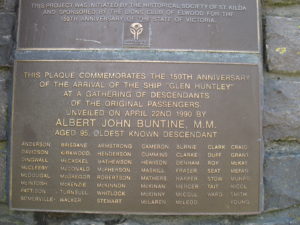 When Catherine MacDonald boarded the Government emigrant ship Glen Huntley she signed on as a widow with three adult children: Alexander, aged twenty-seven, Flora, aged twenty-three and Donald aged eighteen. Her husband, Donald ‘Drochaid’ MacDonald, boarded separately. He had been guarantor for his cousin ‘Long John’ MacDonald who was then deep in debt. Donald hoped to escape the Fort William bankers, but he was spotted on board, arrested and returned to shore. Bound for Melbourne, Australia, the ship left Greenock, Scotland, on 14 December 1839 and four months later on 20 April 1840, sailed into Port Phillip Bay. The passengers were unable to disembark because the ship was flying the yellow fever flag, a signal to those waiting on shore that the passengers must be quarantined.
When Catherine MacDonald boarded the Government emigrant ship Glen Huntley she signed on as a widow with three adult children: Alexander, aged twenty-seven, Flora, aged twenty-three and Donald aged eighteen. Her husband, Donald ‘Drochaid’ MacDonald, boarded separately. He had been guarantor for his cousin ‘Long John’ MacDonald who was then deep in debt. Donald hoped to escape the Fort William bankers, but he was spotted on board, arrested and returned to shore. Bound for Melbourne, Australia, the ship left Greenock, Scotland, on 14 December 1839 and four months later on 20 April 1840, sailed into Port Phillip Bay. The passengers were unable to disembark because the ship was flying the yellow fever flag, a signal to those waiting on shore that the passengers must be quarantined.
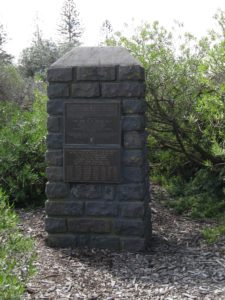
As there was, as yet, no quarantine station in Melbourne, one was hastily erected at a place now called Point Ormond. Two camps were set up, one for the healthy and the other for those still suffering or dying from the fever and they were to be strictly segregated. On 24 April 1840, the passengers’ first footsteps on the soil of their new homeland took them to these temporary dwellings and there they would remain until it was safe to be released into the community.
Assigned to the tents for the healthy were Catherine MacDonald, Flora and Donald. Sadly for the three, a few weeks before their arrival in Melbourne, Alexander ‘Sandy’ had perished from the fever and fallen overboard in delirium. He had been their mainstay and encourager as he constantly reminded them that God would take care of them. Flora’s first introduction to her adopted country was, therefore, a sad and anxious one. She knew that many of her Scottish kinfolk would welcome the little family once they were released from quarantine but what would the future hold for her in this young pioneer colony? When would her beloved father be able to join them? The three MacDonalds pondered these questions as they waited for the ‘all clear’ which heralded their release about 18 June. To their relief, the family of John MacKillop was there to take care of them. It was to the home of Alexander MacKillop, in Collins Street that they were taken. Alexander, following the regulations of the day, guaranteed them employment: Catherine as housekeeper, Flora as housemaid and Donald as a farm labourer.
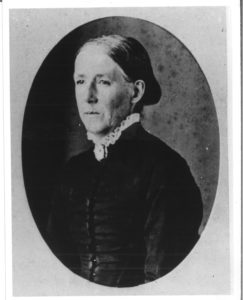 It was not long before love blossomed and Flora and Alexander were married on 14 July 1840 in the little wooden chapel near the site of the present St Francis Church. It was a happy day as they were surrounded by family and many relations. The one cloud for Flora was the absence of her father. In fact he was not to re-join the family until about April 1842.
It was not long before love blossomed and Flora and Alexander were married on 14 July 1840 in the little wooden chapel near the site of the present St Francis Church. It was a happy day as they were surrounded by family and many relations. The one cloud for Flora was the absence of her father. In fact he was not to re-join the family until about April 1842.
Flora’s arrival in Melbourne after the traumatic voyage from Scotland and the dismal time of quarantine receded in her memory on her wedding day as she looked forward to a bright future. She could not foresee the life that lay ahead: a life of many trials and hardships through which she was sustained by her trust in God and God’s providence. Neither could she foresee that her first-born child, Mary, would one day be acclaimed as Saint Mary of the Cross, Australia’s first canonised saint.
Bernadette O’Sullivan rsj
Laudato Si’ Webinar: Part One
April 16, 2020In May 2015 Pope Francis launched his encyclical with the subtitle “On Care for our Common Home” and the title “Laudato Si’” which are the opening words for a hymn composed by St Francis of Assisi in the 1200s.
For our time, this document is both relevant and important, since it highlights the priority that respect for the environment should have in Catholic life, and integrates the notion with what is central to our understanding of humanity’s relationship with God.
2020 Easter Greetings from Sr Monica Cavanagh
April 12, 2020We are an Easter People.
Happy Easter to everyone. What a different Easter Triduum experience it has been as we have walked through the journey with Jesus to Holy Thursday, Good Friday and Easter Sunday. So many of the symbols of this time have taken on new meaning in the light of the Coronavirus COVID-10 pandemic.
On Holy Thursday we have recalled the washing of the feet and the call to service. Keeping our hands washed has been a constant call of these past weeks and I imagined our health care workers washing the feet of those critical patients in their care. We have seen their work of service lauded across our world reminding us as Christians of our own call to be of service to one another. Buying food, as the disciples were invited to do by Jesus for the Passover Meal, has been one reason, we have been able to be seen on the streets. Families have shared meals together as Jesus did with his friends on that first Holy Thursday evening. All these very familiar actions have taken on new meaning for me over these days.
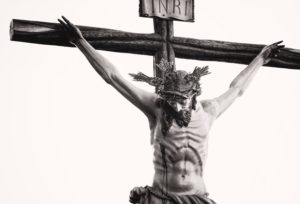 We have stood at the cross with Mary his mother, the other women and John the beloved disciple and gazed upon the reality of our suffering world. We have stood there with the poor and vulnerable and those at the margins without access to medical facilities and places to self-isolate. We have stood there with our health workers and those who are providing essential services risking their lives for others. We have stood there with those who have lost loved ones and whose hearts ache when they have not been able to celebrate a funeral liturgy. We have stood there with all those who have lost their jobs and wonder how they will feed their families. We have stood there with all those who are in isolation and not able to meet with their loved ones. And we have placed all these realities into the hands of our Abba God as Jesus did on the Cross.
We have stood at the cross with Mary his mother, the other women and John the beloved disciple and gazed upon the reality of our suffering world. We have stood there with the poor and vulnerable and those at the margins without access to medical facilities and places to self-isolate. We have stood there with our health workers and those who are providing essential services risking their lives for others. We have stood there with those who have lost loved ones and whose hearts ache when they have not been able to celebrate a funeral liturgy. We have stood there with all those who have lost their jobs and wonder how they will feed their families. We have stood there with all those who are in isolation and not able to meet with their loved ones. And we have placed all these realities into the hands of our Abba God as Jesus did on the Cross.
On Holy Saturday we have waited alone in the tomb of our homes trusting that through the darkness of these times we will find new meaning and purpose for the way we live. We have gone to the place of darkness and emptiness with our fears and disappointments and searched our hearts for purpose and in this place, we have discovered a sacred thread connecting us to one another. We have been humbled by the power of this coronavirus COVDI-19 and we have come to know the great Easter gift of hope.
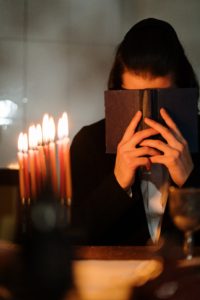 On this Easter we recall that we are an Easter people. Like the women and men joining in a chorus of hope and singing while in the confines of their homes and in lock down we too rise on this Easter knowing that the light of Christ dispels the darkness of our hearts and minds. The Easter Candle has been lit calling us once again to be that Easter light for one another and for those who have no-one to light the candle of Easter joy in their lives.
On this Easter we recall that we are an Easter people. Like the women and men joining in a chorus of hope and singing while in the confines of their homes and in lock down we too rise on this Easter knowing that the light of Christ dispels the darkness of our hearts and minds. The Easter Candle has been lit calling us once again to be that Easter light for one another and for those who have no-one to light the candle of Easter joy in their lives.
In the words of Mary MacKillop, “be calm and full of hope” (1871) as you find new and creative ways to be with one another on this Easter day.
Sr Monica Cavanagh
Congregational Leader
Photo of the Crucifix by Alem Sánchez obtained from Pexels. Used with permission.
Photo person holding a book by cottonbro obtained from Pexels. Used with permission.
Easter Greeting from the Congregational Leadership Team
Greetings from the CLT on this great feast of Easter.
The Congregational Leadership Team (CLT) have provided us with Blessings of comfort and joy this Easter.
Please take some time to listen to Sr Monica Cavanagh’s video message and read the Greetings below before reflecting:
The Whole Universe Moves Towards New Life
April 9, 2020While there is a soul in prison I am not free.
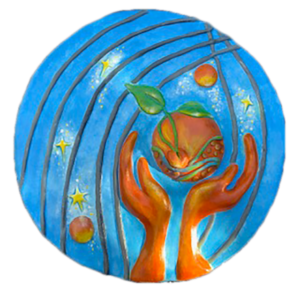 In light of Holy Week and the COVID-19 pandemic are we being drawn to deeper listening and to see and experience the pain around us?
In light of Holy Week and the COVID-19 pandemic are we being drawn to deeper listening and to see and experience the pain around us?
We are experiencing a global movement of compassion. To suffer with – even to death! So many things need to die in order to give rise to new life.
The joy of the resurrection is evident now as we recalibrate and “proclaim the year of God’s favour”. The world has not been responsive to the desperate plight of many people who are vulnerable, poor and in prison. The changes ahead will involve loss for many of us. Every person has an evolutionary impulse to be more and to love more.
So much of our language, our systems, our institutions are absolutely wrong. In Australia at least one third of adults and children in our prisons are on remand (not convicted of any offence), are being exposed, by their living conditions, to COVID-19. Prisoners in Australia do not have access to hand sanitisers and if they cannot afford to buy soap they will not have access to their basic hygiene needs. In Chicago and Louisiana recent data collection is showing that about seventy percent of people dying of COVID-19 are African American even though they are a minority in both areas. Aboriginal people in Australia are highly vulnerable and are likely to die if they contract COVID-19 as many have comorbidities, and, to our national shame, live in overcrowded and appalling housing conditions. The pandemic is a time for global transformation as the universe invites and moves all of us towards new life…
In 1667, during the Great Plague, Isaac Penington wrote to the Quaker community:
For generations now countries all over the world have chosen economics over people. Systemic oppression, institutional poverty and racism are endemic. Is our local and global community being compelled by soul destroying conditions and injustice to join with Simon of Cyrene and accompany Jesus to Calvary?
We know that Jesus didn’t die to pay for our sins – Jesus died after choosing, with his life:
Kenise Neill rsj
Easter Reflections 2020
Easter provides us with a time to refocus our relationships with God.
The Daily Reflection series below is a great resource for daily meditation and prayer during Easter: one each for Holy Thursday, Good Friday, Holy Saturday and Easter Sunday.
Holy Thursday
Good Friday
Holy Saturday
Easter Sunday
Reflections provided by: Antoinette Baldwin rsj, Mary Dwyer rsj, Jean-Pierre Prévost (taken from Catholic Digest) and Margaret Gillespie rsj
Working Together to Manage Change and Transition
April 8, 2020Australian families and communities have experienced significant change and loss following the drought, fires and floods that have defined 2020.
As the pandemic situation changes shape daily and we are required to adapt and change so rapidly, it is normal and natural for children, young people and adults to respond in unique and varied ways.
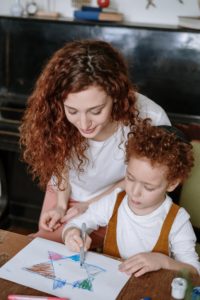 It is not surprising then, that some children, young people and adults may be finding it difficult to transition to home-based schooling and work, limited socialisation, and an upheaval of routine. Sometimes it is not until we move from the ‘doing’ to the ‘being’, that we recognise the impact of the change for ourselves and for others.
It is not surprising then, that some children, young people and adults may be finding it difficult to transition to home-based schooling and work, limited socialisation, and an upheaval of routine. Sometimes it is not until we move from the ‘doing’ to the ‘being’, that we recognise the impact of the change for ourselves and for others.
The impact of the uncertainty, change and loss can be felt in the present, and in the weeks, months and even years following, as individuals, families and communities make sense of what has happened, adjust to the changes, and recover and move forward toward a different future.
In the Seasons for Growth program run by Good Grief we use the metaphor of the ‘seasons’ to help children and young people understand the abstract experiences of change and loss. The metaphor helps children and young people to understand the ‘ups and downs’ of life, that change will come and go (just like the seasons) and that no season lasts forever, not even winter. The Seasons for Growth helps children and young people to recognise and adapt to stressful events as well as the ongoing challenges they may bring. Good Grief supports local communities by training educators and health professionals to deliver Seasons for Growth in their local communities.
Children and young people rely on trusted adults to help manage transitions and so we have prepared an easy-to-read factsheet to support parents, carers and professionals:
Self-Care & Wellbeing: During Times of Uncertainty (PDF)
Please take a look at our Facebook page and the website for additional resources and email with any questions or suggestions if we can support you further.
Fiona McCallum
General Manager, Good Grief
Photo: Mother-and-son by cottonbro obtained from Pexels. Used with permission.
History of the Whanganui Sisters of Saint Joseph
A brief history of the Whanganui Congregation of the Sisters of Saint Joseph
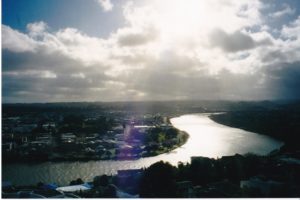
Whanganui, Aotearoa New Zealand, is defined by its mighty Awa (river) which flows from the Central Mountains to the Tasman Sea. Along its length, Te Atihaunui-a-Paparangi (Whanganui people) have lived for 40 generations, and the river is an integral part of their lives.
The first Europeans arrived from England, Scotland and Ireland in the 1840s. Land purchases were negotiated with Whanganui Māori, and finalised in 1848. A military garrison was positioned in the town from 1846 until 1870 due to disturbances from the New Zealand Land Wars.
French Marist missionaries founded mission stations up and down the Awa, and also ministered to the newly arrived. The first Catholic church was built in 1857; the first Catholic school opened in 1866.
When Sisters Hyacinth Quinlan, Clare Rubie, Joseph Kinsella, and Teresa Schmidt arrived at the river wharf in the early hours of 24 April 1880, they were welcomed by the parish priest, Rev Dean Kirk, who with Bishop Redwood had invited them. They came from Perthville NSW, four years after the Diocesan Congregation had been formed. Their knowledge of the country and the Māori people was minimal. They were young, had come from a time of upheaval and estrangement in the Congregation, and were facing great expectations. Boarders for the school were ready and three women to join their community.
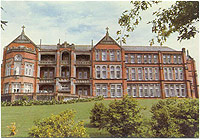
In 1883, the Sisters were asked by Bishop Redwood to help start a school at Hiruhārama (Jerusalem) where the original Marist mission had lapsed during the troubled times on the river. Sr Teresa Schmidt and Sr Aloysius Malone were to accompany a French woman, Suzanne Aubert, a nurse fluent in Te Reo (Māori language). The women travelled upriver in waka (canoes), staying in Māori settlements. They returned to Whanganui two years later. Suzanne Aubert went on to begin the first NZ Congregation – the Daughters of Our Lady of Compassion.
In 1885 a foundation was made in Hāwera, Taranaki, and in the following 25 years, seven convents and schools were begun. Land was sought for the growing Congregation and in 1912 Sacred Heart, a large three-story building, was opened on St John’s Hill in Whanganui. A Chapel which still stands was opened in 1918. Further foundations were made, mainly in the central and lower North Island.
The Sisters formalised their connections with the four Diocesan Congregations in Australia, with the Federation of the Australia-New Zealand Sisters of St Joseph in 1967. By the new millennia, each Congregation was going through its own processes of discernment. For the Whanganui Sisters there was much soul-searching until the decision in 2012 to request Fusion with the Sisters of Saint Joseph of the Sacred Heart. Fusion was granted in February 2013 and celebrated in Whanganui on 24 August 2013.
The journey of the Whanganui Sisters of Saint Joseph has had its ebbs and flows. Numbers have fallen, ministries changed, buildings demolished. But just as the mighty Whanganui Awa flows onward, so also the charism continues to flow through all those who live the spirit of Saint Joseph.
Anne Burke rsj
